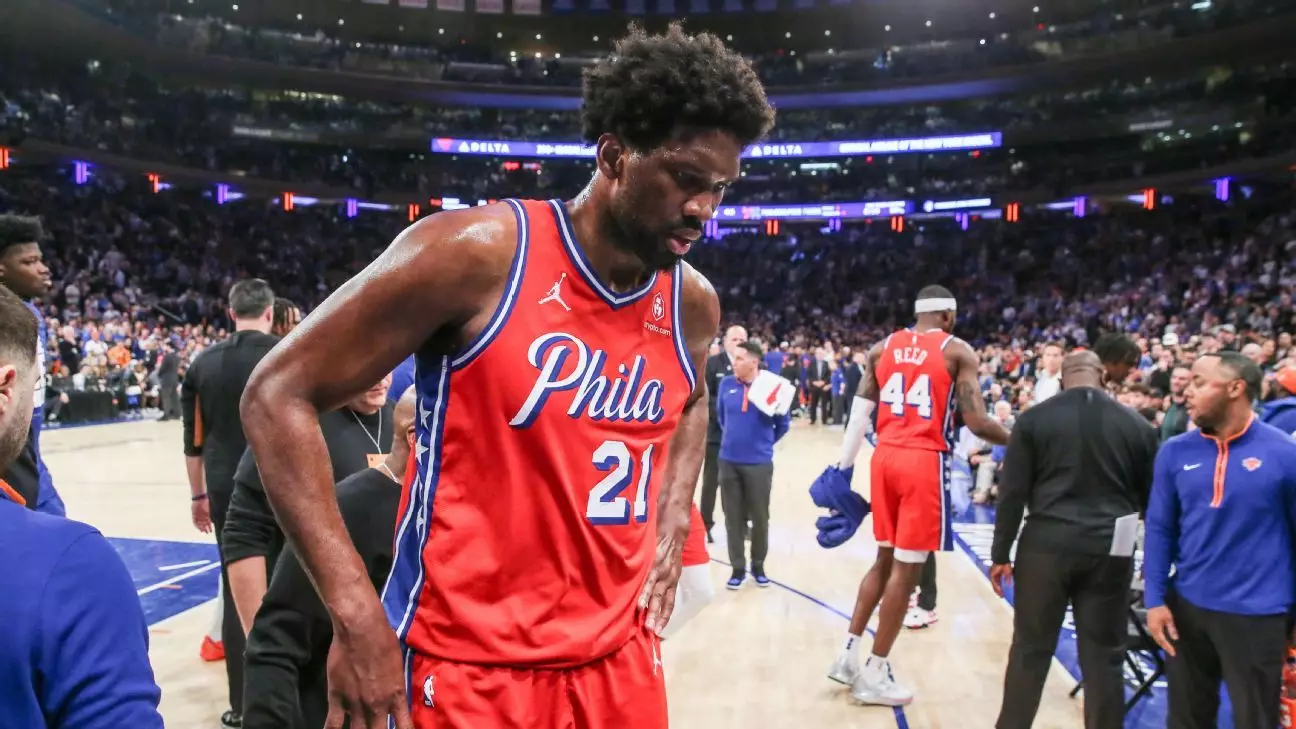Recent reports have emerged that the Philadelphia 76ers may soon find themselves under scrutiny by the NBA regarding the participation of their star center, Joel Embiid. This investigation stems from his absence in the preseason games, which the team attributed to „left knee injury management.“ The decision to hold out Embiid highlights a recurring theme within the league—the balance between player health and competitive integrity.
The Implications of Missing Game Time
Embiid’s absence from the season opener and subsequent games against high-profile teams like the Milwaukee Bucks, Toronto Raptors, and Indiana Pacers introduces a critical discussion about player management strategies in the NBA. This kind of caution is not merely a trend but a necessary approach rooted in the reality of modern sports where injuries can plague even the most talented players. The NBA’s participation policy explicitly states that teams will be reviewed when superstars like Embiid miss nationally televised games, putting the 76ers in a position that could lead to rebuke or sanctions.
The 76ers have constructed a detailed plan for Embiid’s return to form, including individualized training regimes and scrimmages aimed at revamping his fitness without exacerbating his existing knee issues. This strategy illustrates an evolution in how professional teams approach the physical demands on players. In light of Embiid’s past struggles, the team’s proactive stance reflects a broader understanding of preventive care.
Yet, this „new normal“ raises questions—will this approach be effective in the long run? While it aims to preserve Embiid’s performance in the postseason, it simultaneously risks alienating fans hungry for live action from their star athletes. An expectation for limited play may frustrate investors and loyal fans alike, who yearn to see their favorite players shine in full form.
As the 76ers navigate this intricate landscape of player health and team performance, the ramifications extend beyond Embiid. The directive to ease the burden of back-to-back games for both him and fellow possible star Paul George suggests a shift in how the franchise calculates its path to victory. Daryl Morey, the team’s president of basketball operations, has stated a clear intention to tread carefully with its key players. This recalibrated approach, while seemingly prudent, may come at the cost of team chemistry and momentum.
As Embiid disclosed a deep commitment to ongoing weight loss and structural knee support, his personal resolve mirrors the collective responsibility the organization bears. With his history of injuries, the stakes are high—not just for him but for a team that invests a great deal in ensuring they field a competitive squad. The road ahead involves a delicate balance; the 76ers must prioritize player health without compromising their competitive edge.
The coming weeks will undoubtedly reveal more about the NBA’s ongoing commitment to scrutinizing such management strategies. For teams like the 76ers, the challenge will be to navigate this terrain astutely, maintaining a roster capable of winning while safeguarding the well-being of its most vital components. As the season gets underway, all eyes will be glued to Embiid’s progress and the 76ers’ broader strategy amidst inevitable scrutiny.


Napsat komentář